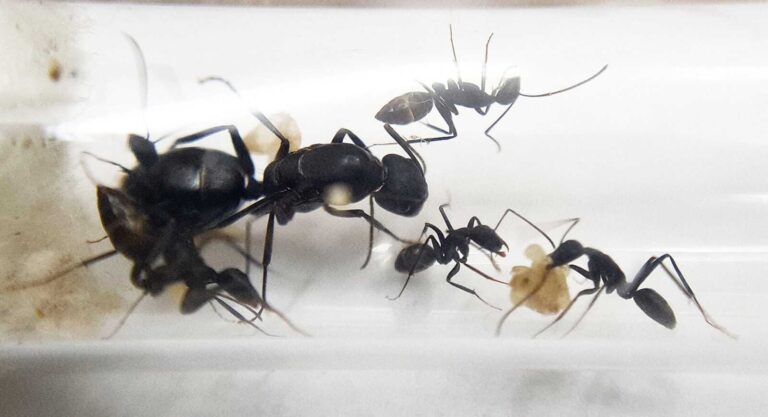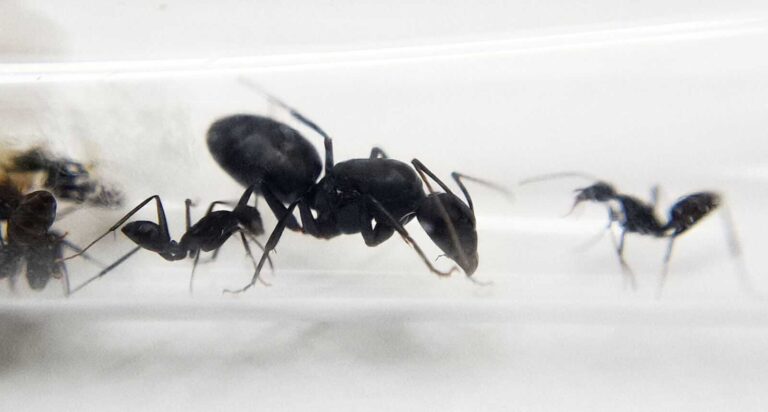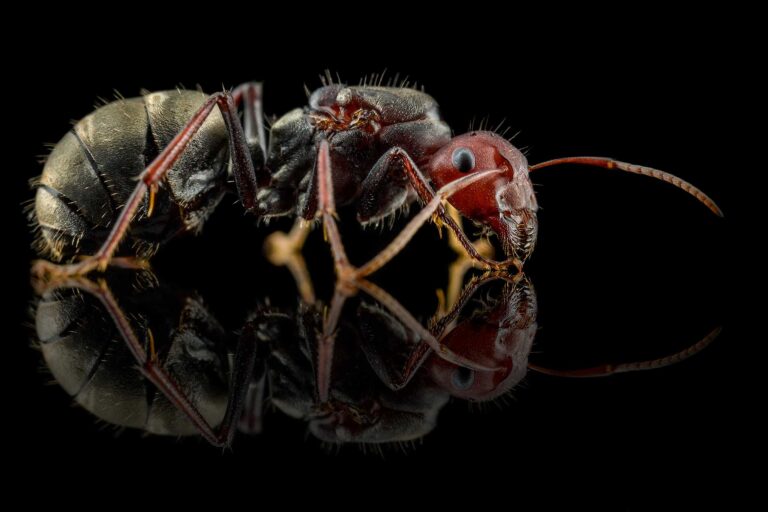Showing all 2 results
Product categories
Stock status
Filter by price
Defficulty
Number of workers
Origin
Filter by size
Wintering
Camponotus alii
459,90 zł – 729,90 złPrice range: 459,90 zł through 729,90 złThe Camponotus alii ant species is a monogynous colony with a fast development speed and a size of up to 5000 workers. The queen measures 16-19mm, workers measure 6-9mm, and majors measure 8-14mm. They have a black color and their diet includes food insects, syrup, fruits, vegetables, jelly, and cooked chicken without salt.
Camponotus sericeus
339,90 zł – 519,90 złPrice range: 339,90 zł through 519,90 złCamponotus sericeus is a monogynous ant species with colony sizes of up to 5000 workers. They have an average development speed. The queen measures 13-15 mm, workers measure 5-8 mm, and majors measure 8-11 mm. They have a dark gray color with thick golden hairs on the abdomen and a slightly red head. Their nutrition consists of food insects such as cockroaches and crickets, as well as syrup made from a water/honey mixture at various ratios.




